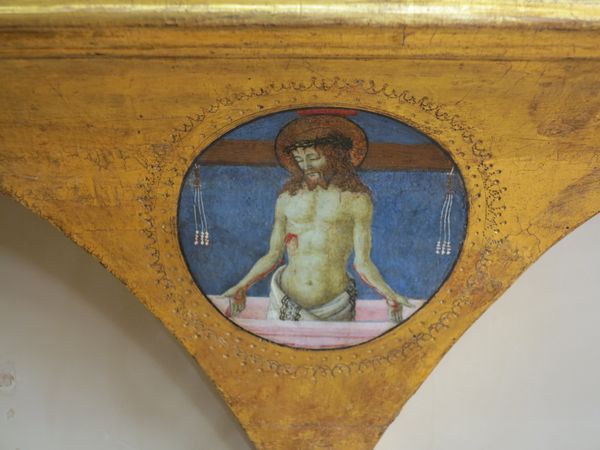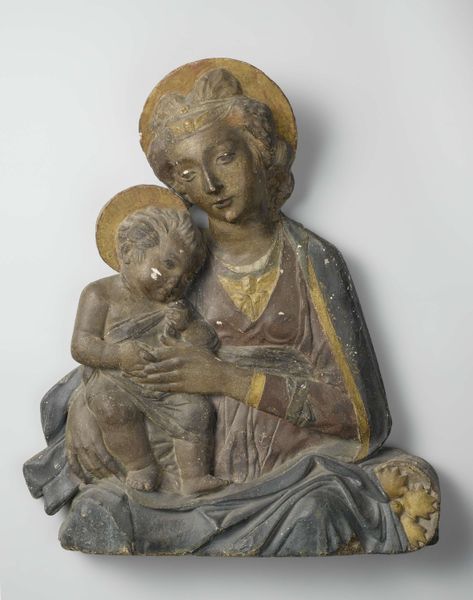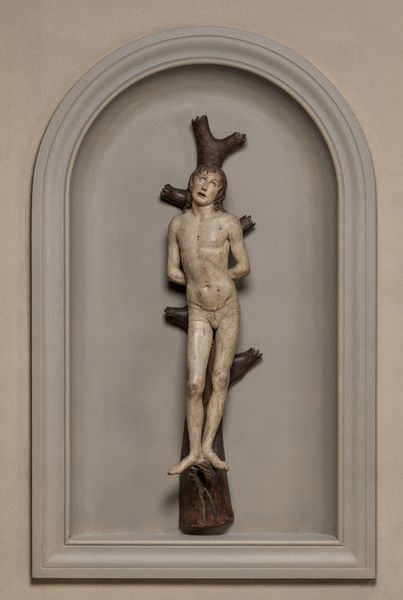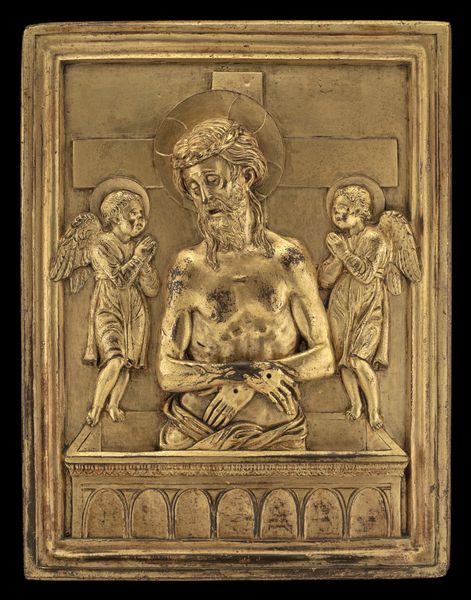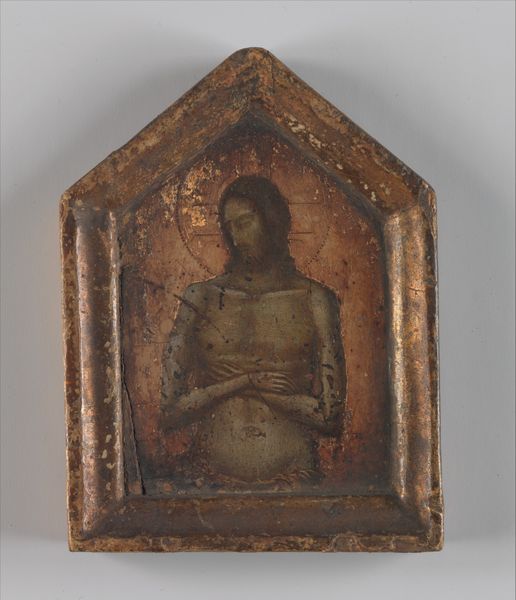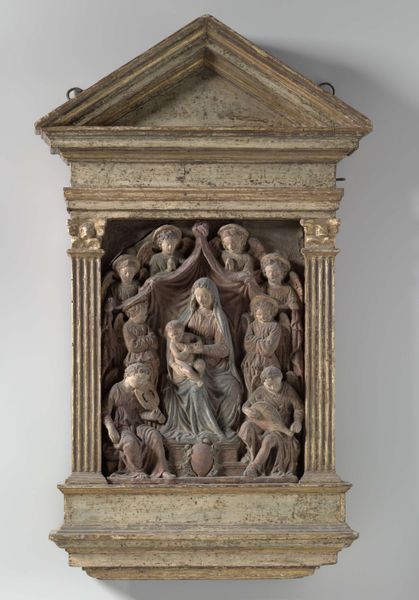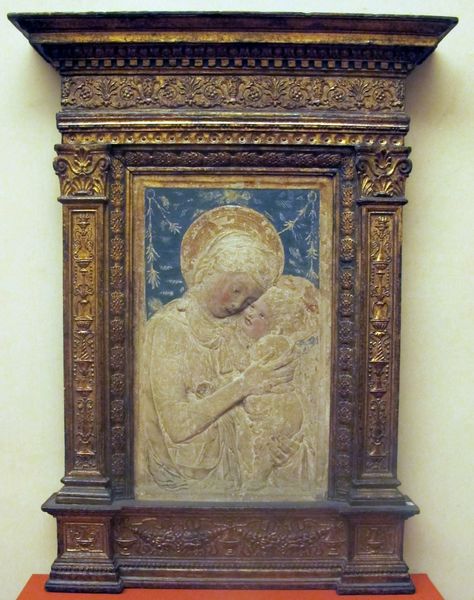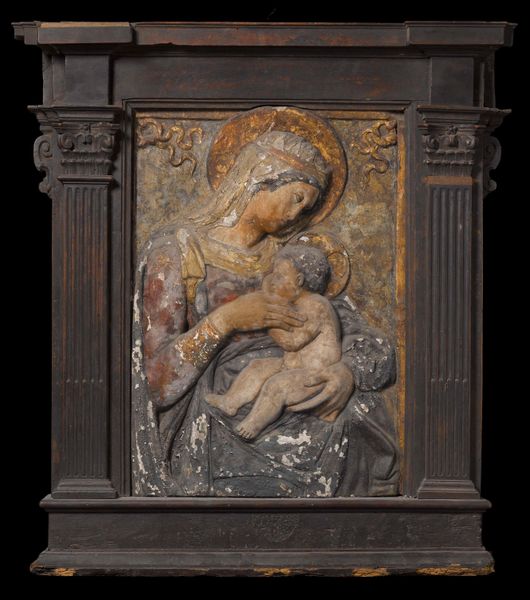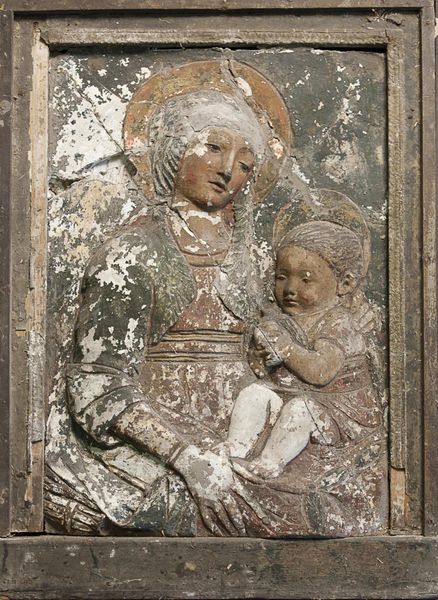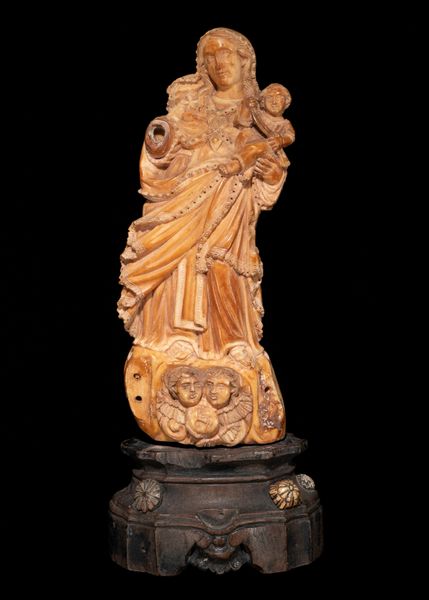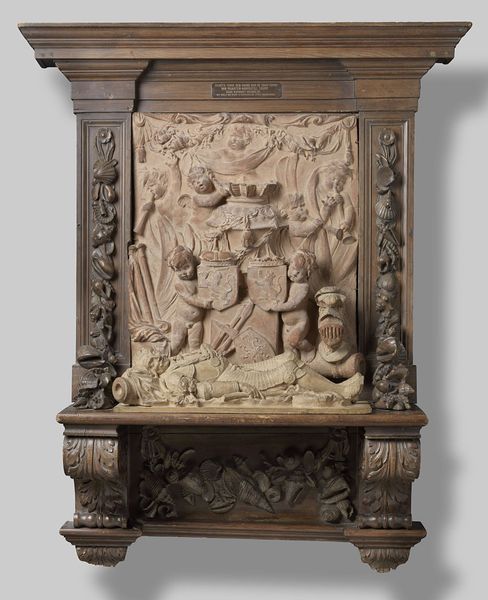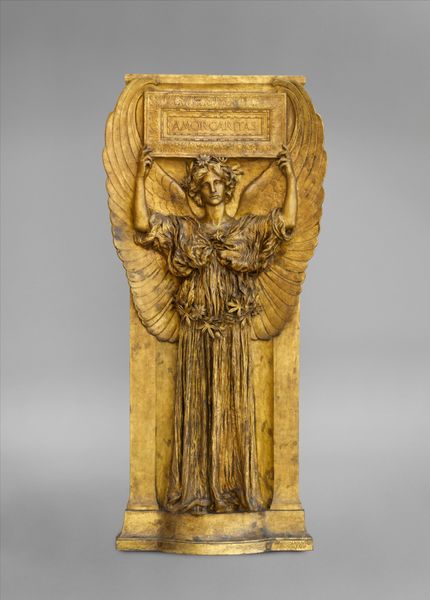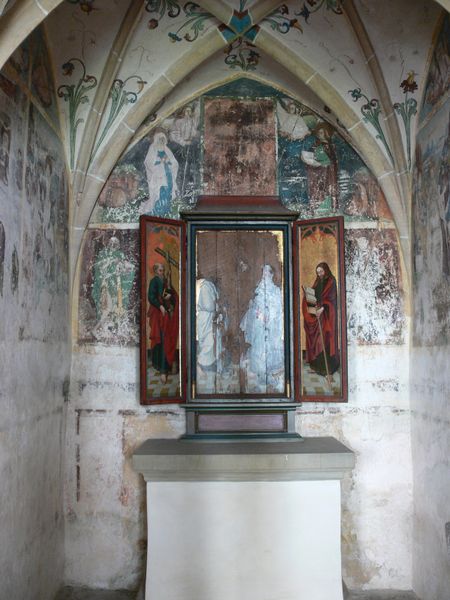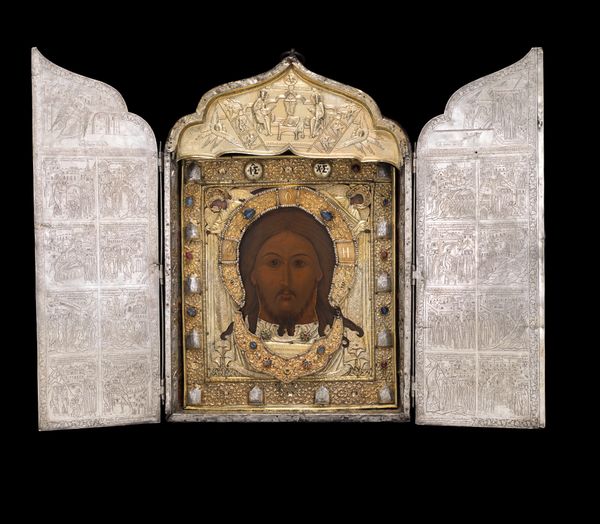
painting, fresco
#
portrait
#
medieval
#
painting
#
sculpture
#
figuration
#
fresco
#
history-painting
#
italian-renaissance
#
italy
#
christ
Dimensions: Overall: 65 x 70 in. (165.1 x 177.8 cm)
Copyright: Public Domain
Niccolò di Tommaso made this painting of the Man of Sorrows, sometime in the second half of the 14th century. This image presents a visual paradox: Christ is dead, but alive; suffering, but triumphant. Di Tommaso painted this image during a time of religious revival in Italy, and it reflects the increased focus on Christ's suffering during the medieval period. Looking at the emaciated body of Christ, the wound on his side, the marks on his hands, we can see how the painter emphasizes the physical torment that Christ endured. Yet, he is also framed by a halo and stands powerfully before us. To understand the power of this image, art historians consult devotional literature, sermons, and theological treatises from the period. We can then begin to understand how this image relates to the religious culture of the time. Art, like this painting, always exists in a specific social and institutional context.
Comments
No comments
Be the first to comment and join the conversation on the ultimate creative platform.
